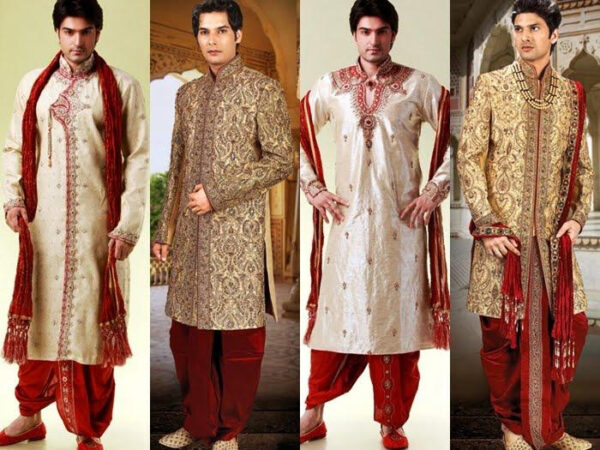Delhi, the capital union territory of India, stands out for its rich cultural heritage and diverse population. Its history has significantly influenced its traditions, and this is vividly reflected in the traditional dress of Delhi. The attire worn in Delhi combines elements from various regions, including the North, South, and Northeast of India. This blend of styles showcases Delhi’s unity and cultural diversity. Here’s a look at some of the traditional dresses for both women and men in Delhi.
Traditional Wear for Women in Delhi
Salwar Kameez Suit
The salwar kameez is a quintessential part of Delhi’s traditional dress for women. The salwar consists of loosely fitting pants held together with a cotton string, draped around the waist. This attire comes in various forms, including the churidar, which is tight and narrow at the bottom with multiple folds. The kameez, a long, loose piece of cloth, is often adorned with intricate embroidery, precious stones, and mirror work, adding elegance to the outfit.
Dupattas
Dupattas are long, versatile pieces of cloth that complement the salwar kameez. Typically made of cotton, these dupattas are decorated with zari (metallic thread) and mirror work. Women often wear dupattas during special events and festivals, using them to cover the upper portion of their bodies or to shield themselves from the heat. They are an essential part of the traditional dress of Delhi, enhancing the overall aesthetic of the outfit.
Ghagra Choli
The ghagra choli is another traditional outfit cherished by women in Delhi. The ghagra is an ankle-length, flared skirt that comes in various styles and designs. The choli is a unique blouse often embellished with mirror work and intricate embroidery. Together, they create a vibrant and elegant look suitable for festive occasions.
Chikankari Sarees
Chikankari sarees are renowned for their exquisite craftsmanship. Made with paisley motifs, floral patterns, and detailed chikankari embroidery, these sarees are a testament to timeless elegance. The white and off-white embroidery adds a classic touch, while the designs on the pallus (the end of the saree) enhance its beauty.
Zardosi Sarees
Zardosi sarees are a traditional form of hand-embroidered attire with Persian origins. These sarees are decorated with fine mirror work and elaborate gold and silver thread designs. They are often worn by brides and are made from luxurious fabrics like crepe, chiffon, georgette, and silk. The combination of these sarees with gold and silver jewelry adds a regal touch to the traditional dress of Delhi.
Traditional Wear for Men in Delhi
Sherwani
The sherwani is a traditional four-piece outfit typically worn by grooms on their wedding day. This attire includes a plain velvety kurta paired with a loosely fitted pajama. The kurta often features intricate mirror work, and the sherwani is complemented by an elegant turban, enhancing its royal appearance. Many men also choose to add a matching dupatta draped over one shoulder.
Kurta Pyjama
The kurta pyjama is a staple of traditional dress for men in Delhi. This outfit consists of a cotton kurta paired with loose, baggy trousers known as pajamas. Kurtas often feature nature-inspired designs like flowers, leaves, and paisley motifs. These are worn during weddings and special occasions, typically made from high-quality silk for an added touch of luxury.
Dhotis
Dhotis are traditional garments commonly worn in rural areas but also make appearances in Delhi’s traditional attire. These are long pieces of cotton cloth, usually white or cream, draped around the waist and tucked at the back. They can be paired with silk kurtas for special events, providing a blend of traditional and modern styles.
Conclusion
The traditional dress of Delhi vividly reflects the city’s rich cultural tapestry. From the flowing salwar kameez suits and elegant sarees to the regal sherwanis and comfortable kurtas, Delhi offers a diverse range of clothing options for both women and men. Embroidery styles like Zardosi and chikankari add a sophisticated and artistic touch to the garments. The traditional attire remains a vital part of Delhi’s cultural identity, especially during festivals and special occasions, showcasing the city’s heritage and unity.



